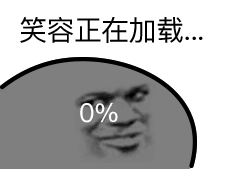1
2
3
4
5
6
7
8
9
10
11
12
13
14
15
16
17
18
19
20
21
22
23
24
25
26
27
28
29
30
31
32
33
34
35
36
37
38
39
40
41
42
43
44
45
46
47
48
49
50
51
52
53
54
55
56
57
58
59
60
61
62
63
64
65
66
67
68
69
70
71
72
73
74
75
76
77
78
79
80
81
82
83
84
85
86
87
88
89
90
91
92
93
94
95
96
97
98
99
100
101
102
103
104
105
106
107
108
109
110
111
112
113
114
115
116
117
118
119
120
| var restify = require('restify');
var turf=require("@turf/turf");
var kriging=require("./lib/kriging");
const topojson=require("topojson");
var turf=require("@turf/turf");
const server = restify.createServer({
name: 'PhGIShlgyNode',
version: '1.0.0'
});
server.use(restify.plugins.acceptParser(server.acceptable));
server.use(restify.plugins.queryParser());
server.use(restify.plugins.bodyParser());
server.use(function(req,res,next){
res.header("Access-Control-Allow-Origin", "*");
res.header("Access-Control-Allow-Headers", "Content-Type,Content-Length, Authorization, Accept,X-Requested-With");
res.header("Access-Control-Allow-Methods","PUT,POST,GET,DELETE,OPTIONS");
next();
})
let weight_breaks=[];
let colorSize=20;
let maxValue=5000;
let minValue=50;
let step=(maxValue-minValue)/colorSize-2;
weight_breaks.push(minValue);
for(let i=1;i<colorSize-1;i++){
weight_breaks.push(minValue+i*step);
}
weight_breaks.push(maxValue);
server.post('/api/kriging', function (req, res, next) {
let dataset={"type":"FeatureCollection","features":[{"type":"Feature","geometry":
{"type":"Point","coordinates":[119.84338055,28.39903371]},"properties":{"id":40,"value":12},"id":"hlgy_station.1"},
{"type":"Feature","geometry":{"type":"Point","coordinates":[119.84262228,28.39976446]},"properties":{"id":57,"value":28},"id":"hlgy_station.2"},
{"type":"Feature","geometry":{"type":"Point","coordinates":[119.84365151,28.39991672]},"properties":{"id":58,"value":60},"id":"hlgy_station.3"},
{"type":"Feature","geometry":{"type":"Point","coordinates":[119.84268319,28.39863171]},"properties":{"id":59,"value":58},"id":"hlgy_station.4"},
{"type":"Feature","geometry":{"type":"Point","coordinates":[119.84309731,28.39874133]},"properties":{"id":80,"value":47},"id":"hlgy_station.5"},
{"type":"Feature","geometry":{"type":"Point","coordinates":[119.84231169,28.39945996]},"properties":{"id":81,"value":75},"id":"hlgy_station.6"},
{"type":"Feature","geometry":{"type":"Point","coordinates":[119.84238477,28.39940515]},"properties":{"id":85,"value":9},"id":"hlgy_station.7"},
{"type":"Feature","geometry":{"type":"Point","coordinates":[119.84246394,28.39934425]},"properties":{"id":92,"value":46},"id":"hlgy_station.8"},
{"type":"Feature","geometry":{"type":"Point","coordinates":[119.84311558,28.40037956]},"properties":{"id":82,"value":18},"id":"hlgy_station.9"},
{"type":"Feature","geometry":{"type":"Point","coordinates":[119.84299378,28.3994965]},"properties":{"id":83,"value":30},"id":"hlgy_station.10"},
{"type":"Feature","geometry":{"type":"Point","coordinates":[119.84306686,28.39944169]},"properties":{"id":84,"value":19},"id":"hlgy_station.11"},
{"type":"Feature","geometry":{"type":"Point","coordinates":[119.84393165,28.39923463]},"properties":{"id":94,"value":55},"id":"hlgy_station.12"}]}
let values = [], lngs = [], lats = [];
dataset.features.forEach(feature => {
values.push(feature.properties.value);
lngs.push(feature.geometry.coordinates[0]);
lats.push(feature.geometry.coordinates[1]);
});
let variogram = kriging.train(
values,
lngs,
lats,
"exponential",
0,
100
);
let extent=[119.83800000000001, 28.395, 119.848, 28.404999999999998];
let polygons = [];
polygons.push([
[extent[0], extent[1]], [extent[0], extent[3]],
[extent[2], extent[3]], [extent[2], extent[1]]
]);
let grid = kriging.grid(polygons, variogram, (extent[2] - extent[0]) / 500);
let fc = gridFeatureCollection(grid,
[extent[0], extent[2]], [extent[1], extent[3]]);
var collection = turf.featureCollection(fc);
var breaks = [0, 0.1, 0.2, 0.3, 0.4, 0.5, 0.6, 0.7, 0.8, 0.9, 1.0];
var isobands = turf.isobands(collection, breaks, { zProperty: 'value' });
function sortArea(a,b)
{
return turf.area(b)-turf.area(a);
}
isobands.features.sort(sortArea);
res.send(isobands);
return next();
});
server.listen(8799, function () {
console.log('%s listening at %s', server.name, server.url);
});
const gridFeatureCollection = function (grid, xlim, ylim) {
var range =grid.zlim[1] - grid.zlim[0];
var i, j, x, y, z;
var n = grid.length;
var m = grid[0].length;
var pointArray = [];
for (i = 0; i < n ; i++)
for (j = 0; j < m ; j++) {
x = (i) * grid.width + grid.xlim[0];
y = (j) * grid.width + grid.ylim[0];
z = (grid[i][j] - grid.zlim[0]) / range;
if (z < 0.0) z = 0.0;
if (z > 1.0) z = 1.0;
pointArray.push(turf.point([x, y], { value: z }));
}
return pointArray;
}
|





